This article was medically reviewed by Theodore Leng, MD. Dr. Leng is a board certified Ophthalmologist and Vitreoretinal Surgeon and an Assistant Professor of Ophthalmology at Stanford University. He completed his MD and Vitreoretinal Surgical Fellowship at Stanford University in 2010. Dr. Leng is a Fellow of the American Academy of Ophthalmology and the American College of Surgeons. He is also a member of the Association for Research in Vision and Ophthalmology, the Retina Society, the Macula Society, the Vit-Buckle Society, as well as the American Society of Retina Specialists. He received the Honor Award by the American Society of Retina Specialists in 2019.
There are 16 references cited in this article, which can be found at the bottom of the page.
This article has been viewed 24,037 times.
Treatment of glaucoma is focused on reducing pressure in the eyeball, called the intraocular pressure (IOP). This can be done through lifestyle changes and medical treatment. Treatment, however, differs depending on the type of glaucoma you have. Treating glaucoma requires that you understand the disease, manage symptoms and risk factors, and get the help of your doctor.
Steps
Understanding Glaucoma
-
1Learn about what glaucoma is and how it's treated. Understanding glaucoma in detail can help patients adhere to a treatment plan. Glaucoma is a group of diseases which damage the optic nerve.[1] Glaucoma can be caused by an increase in eye pressure, but it can also occur without an increase in eye pressure (known as low-tension or normal-tension glaucoma). The treatment of glaucoma is focused on reducing the pressure in the eyeball, called the intraocular pressure (IOP) or eye blood pressure. This should be done with medical supervision.
- In a normally functioning eye, a fluid called aqueous humor is produced in the posterior (rear) chamber of eye. It then travels to the anterior (front) chamber of eye by passing the pupil where it exchanges contents with the cornea and lens. It exits to the system where the recirculation will cycle through the eye again.[2]
-
2Learn about the different types of glaucoma. There are two main types of glaucoma: open angle and closed angle. Both types of the disease are characterized by progressive optic nerve damage that is sometimes related to an increase in eye pressure inside the eye, called intraocular pressure.[3]Advertisement
-
3Learn the symptoms of glaucoma. The two main types of glaucoma have completely different symptoms. The symptoms of open-angle glaucoma include tunnel vision, or the gradual loss of peripheral vision. The symptoms of acute closed-angle glaucoma include eye pain, nausea and vomiting, sudden loss of sight, blurred vision, light halos, and red eyes.[4]
-
4Understand open-angle glaucoma. Open-angle is the most common type of glaucoma, responsible for 90% of cases of glaucoma. In open-angle glaucoma, there is either a lack of cells in the trabecular network, the cells that are available are not functioning correctly, or the trabecular meshwork may be partially clogged, causing slower than normal drainage of aqueous humour. Without an exit for the fluid, the result is an accumulation of aqueous humour in eye, thus increasing the intraocular pressure. This results in a suffocating optic nerve. The complication of this is diminished vision ultimately leading to blindness if left untreated.[5]
- Some symptoms of open-angle glaucoma are slow or gradual vision loss and painless change of vision.
- Many people do not have any other symptoms; therefore, it is important to maintain eye doctor appointments to regularly test the pressure inside your eye. Diagnosis cannot be made without testing IOP.[6]
-
5Understand closed-angle glaucoma. Closed-angle glaucoma is caused by aqueous humour accumulation causing a bulging iris, thus physically obstructing aqueous humour drainage. Unlike open-angle glaucoma, it is a painful situation. Generally, it is acute in nature; however, chronic cases are also possible.
- This is a medical emergency and you should be immediately taken to the nearest medical facility.
- Patients with open-angle glaucoma should be cautious when administering eye drops, because any drops that dilate pupils can result in closed-angle glaucoma. Before administering drops ask an eye care professional if it is advisable. If you do experience pain with drops and vision changes, go to the nearest medical facility and inform your doctor.[7]
-
6Understand the risk factors for glaucoma. Understanding risk factors for glaucoma can help patients keep an eye on warning signs and symptoms if they are at higher risk. Those who are older than 40 are at a higher risk of developing glaucoma. This is due to the natural aging of cells in the trabecular meshwork, making them more prone to accumulation of aqueous humour. Diabetics are twice as likely to develop glaucoma than non-diabetics.
- Environmental stress can also become a factor. Exposure to pollutants, such as smoke or UV light, without proper protection can cause an increased amount of free radicals. Free radicals are molecules that have unstable electrons — they have an odd, unpaired electron. This unstable molecule attempts to stabilize by attacking a healthy molecule, trying to steal an electron. This turns the attacked molecule into a free radical, an so on. Eventually, this reaction can damage the cell.[8]
Preventing and Treating the Symptoms of Glaucoma
-
1Learn some relaxation techniques and exercises. Some eye exercises can relieve stress and can help relax and strengthen your eyes. Although eyestrain doesn't cause glaucoma, people who suffer from glaucoma should reduce strain on their eyes in order to accommodate the low amount of aqueous humour exiting in relation to its production. The great part is these are things you can do at home or anywhere you are as long as you are comfortable. Here are some examples:[9]
- Blinking provides a break for our eyes, but is often disregarded due to our heavy and long workloads. This may seem unnecessary to think about, but eyestrain makes this a concern. Blinking helps lubricate your eyes by spreading tear film evenly and can help eyestrain due to eye dryness.[10] Blinking cleanses eyes by mechanically pushing toxins out with tears.[11] You should blink once every four seconds to spread tear film and prevent tired eyes due to dryness.
- Palming can be done by simply taking your palms and using them to cover your closed eyes for a few minutes. Sit comfortably in a chair with your back straight. Put your elbows on a table — on top of pillow for added comfort. Cup each hand and close eyes. Place the right cupped hand over the right closed eye, and the left cupped hand over the left closed eye. Breathe normally and relax with your palms on your eyes for five to 10 minutes.[12]
- Practice tracing figure eights with your eyes. This exercise helps your eye muscles and increases their flexibility. Imagine a horizontal figure eight or infinity sign in front of you. Trace the eight with only your eyes slowly, about ten times, without moving your head.
- These methods should be done together. As a result of patient's commitment to these exercises, patients can experience less eyestrain. Do these exercises for about 20 minutes a day, four to five times a week, or at the advice of orthoptic specialist.
-
2Try focusing or zooming your eyes. By focusing on objects at different distances, you can provide some relief to eyestrain. For example, eyestrain can occur when focusing on monitors or screens for long periods of time. A simple break to perform this technique can also remind you to blink, thus hydrating eyes.
- Focusing. Simply find a relaxing place to sit. Put your thumb in front of you, around 10 inches (25.4 cm) away and try to focus your eyes on it. After a few seconds try to focus on something else again, around 10 to 20 feet (3.0 to 6.1 m) away from you. Don’t forget a deep breath before you switch focus in your eyes!
- Zooming. This improves your focusing skills and also strengthens your eye muscles. Try to work again with your thumb. Put your thumb in front of you with your arms outstretched and after a few seconds try to bring it near, around 3 inches (7.6 cm) away from your eye. Do this for a few minutes.
-
3Eat the right diet. Eating healthy cannot cure glaucoma but some nutrients and vitamins from healthy foods can help you improve your eyesight. Here are some foods that are good for the eyes:[13]
- Carrots are rich in beta-carotene, which is good for smooth eye function.
- Green, leafy vegetables and egg yolks are rich in lutein and zeaxanthin, both powerful antioxidants.
- Citrus fruits and berries are rich in Vitamin C.
- Almonds are high in vitamin E which are antioxidants.
- Fatty fish is rich in DHA and omega-3s and great for overall eye health.
-
4Limit your fluid intake, especially of caffeine. Since you are experiencing eye pressure, drinking several fluids at a given time can temporarily increase eye fluid buildup, leading to pressure. Instead, stick to a steady stream of water to keep hydrated.
- Limit drinking caffeine as it can contribute in increasing eye pressure, too. That means decaffeinated sodas and only decaffeinated coffees and teas. Read the label first to be sure!
- One cup of coffee a day is thought to be a safe amount. It is not clear how much or why coffee may increase intraocular pressure; however, coffee does have an effect on blood flow and the vessels that feed the eyeball. Many health professionals recommend limiting coffee to a cup a day even though the exact mechanism is not well understood.
- Some evidence suggests that aerobic exercise can also help to reduce IOP. Exercise can reduce systemic high blood pressure and is overall helpful to maintain a healthy lifestyle.[14]
-
5Use over-the-counter eye drops. Lubricating eye drops are only for relief of eyestrain and not to treat glaucoma. They simply treat related dry eye. See your eye doctor for more information on relieving eyestrain with a preexisting condition.
- Artificial tears can only provide supplemental care and not a substitute for natural tears.
- Artificial tears can help alleviate dryness by replacing the layer of tear film that helps keep eyes moist and tears spread evenly throughout surface of eye.
- Eye ointments can comfort due to their lubricating effect and are particularly useful during extended periods when artificial tears cannot be applied.
- Over-the-counter eye drops (such as Systane) are administered about four to six times daily or as needed.[15]
Treating Glaucoma Medically
-
1Use prescribed medicated eye drops. Medicated eye drops are the most common way of treating glaucoma.[16] These require a prescription so the eye doctor can regularly check eye pressure as well as any complications that may occur. Over-the-counter eye drops are not recommended in combination with prescription eye drops. Prescription eye drops can lower eye pressure by slowly improving fluid drainage in your eyes. These are usually taken every day, of course with the guidance of an ophthalmologist.
- If this sounds like a convenient solution for you, talk to your doctor. She will be able to set you up with the kind that is right for you.
-
2Look into using beta-blockers. This type of eye drop is used to reduce the fluid in the eyes. Examples of this drug include timolol (Betimol) betaxolol (Betoptic), and metipranolol (OptiPranolol). These are usually given one drop, once or twice daily.
- The side effects of this eye drop may include breathing problems, hair loss, fatigue, depression, memory loss, a drop in blood pressure, and impotence.[17]
-
3Talk to your doctor about prostaglandin analogs. This eye drop has replaced beta-blockers as the most common eye drop used because it does have fewer side effects. This drop, usually given one per day, increases fluid flow in the eye and reduces eye pressure.
- Its possible side effects include a reddening and stinging feeling in the eyes, a little swell in the outer part of the eye and the iris of the eye becoming dark. The color of the eyelids may also change.[18]
-
4Know that cholinergic agents are an option, too. These are also called miotics because they narrow the size of the pupils. On the other hand, they help with glaucoma by increasing fluid flow in the eye. Common examples are pilocarpine and carbachol.
- Possible side effects are having smaller pupils (less intake of light), blurred vision, an aching brow, and an increased risk of retinal detachment.
- These eye drops are infrequently used anymore as a treatment for glaucoma because it usually requires one drop, three to four times a day. Rather it is now commonly used to keep pupils smaller prior to laser iridotomy — in other words, conditions unrelated to glaucoma.[19]
-
5Alternatively, look into carbonic anhydrase inhibitors. These eye drops reduce fluid production in the eyes.[20] Drug examples are Trusopt and Azopt, with one drop taken two to three times a day. These drugs can also be use as pills in eliminating body fluid, including in the eyes.
- Possible side effects may include nausea, eye irritation, dry mouth, frequent urination, tingling in the fingers/toes, and a strange taste in the mouth.[21]
-
6Consider using an adrenergic agonist. These eye drops both reduce fluid flow in the eye and at the same time increase the fluid drainage in the eye. Usually one drop is needed per day. Drug examples are Alphagan, Propine and Iopidine. These are not commonly used, as 12% of users may have an allergic reaction.
- Possible side effects may include irregular heartbeat, high blood pressure, fatigue, red, itchy or swollen eyes, and dry mouth.
-
7Consider surgery if all else fails. Surgical intervention for glaucoma is done if eye drops or drugs don’t work, or if the person cannot tolerate the drugs' side effects. The main reason for surgery is to improve the fluid flow in the eye to lower eye pressure. Sometimes, your initial surgery does not lower eye pressure enough, requiring you to have a second surgery or to still continue using eye drops. The different kinds of eye surgery are as follows:
- Drainage implants. Implants are usually done for children and for those suffering from advanced glaucoma and secondary glaucoma.
- Laser surgery. Trabeculoplasty is a laser surgery that uses a high-energy laser beam to open blocked drainage canals and let the fluid run easily in the eyes.
- Laser iridotomy. These are for people with very narrow drainage angles. A small hole is created on the top part or side of the iris for improved fluid flow.
- Filtering Surgery. In this procedure, a surgeon creates an opening in the sclera (the white part of the eye) and removes a small piece of tissue in the base of the cornea where fluid goes out, allowing the fluid to flow freely out of the eye.
Expert Q&A
-
QuestionWhat can you do to prevent glaucoma?
 Mark Cannon, ODDr. Mark Cannon is an Optometrist and Chief of Optometry at Cannon Eyecare, a family-owned optometry practice in Seattle, Washington. With over 10 years of experience, Dr. Cannon specializes in ocular disease, dry eye, glaucoma, eye infection, contact lens fitting, and pediatrics. Dr. Cannon holds a BS in Biology and Psychology from Indiana University. He received his Doctorate in Optometry from Indiana University School of Optometry, where he earned the Dean's Scholar award and participated in years of ophthalmic research. Dr. Cannon worked as an optometrist for four years before founding Cannon Eyecare, which offers full-scope medical optometry services. Dr. Cannon is a member of the American Optometric Association, King County Optometric Society, and the Optometric Physicians of Washington.
Mark Cannon, ODDr. Mark Cannon is an Optometrist and Chief of Optometry at Cannon Eyecare, a family-owned optometry practice in Seattle, Washington. With over 10 years of experience, Dr. Cannon specializes in ocular disease, dry eye, glaucoma, eye infection, contact lens fitting, and pediatrics. Dr. Cannon holds a BS in Biology and Psychology from Indiana University. He received his Doctorate in Optometry from Indiana University School of Optometry, where he earned the Dean's Scholar award and participated in years of ophthalmic research. Dr. Cannon worked as an optometrist for four years before founding Cannon Eyecare, which offers full-scope medical optometry services. Dr. Cannon is a member of the American Optometric Association, King County Optometric Society, and the Optometric Physicians of Washington.
Board Certified Optometrist Get annual eye exams and stay in good physical shape. Some types of glaucoma are more common when the cardio-vascular system is compromised.
Get annual eye exams and stay in good physical shape. Some types of glaucoma are more common when the cardio-vascular system is compromised.
References
- ↑ https://nei.nih.gov/health/glaucoma/glaucoma_facts
- ↑ http://www.mayoclinic.org/diseases-conditions/glaucoma/basics/causes/con-20024042
- ↑ http://www.merckmanuals.com/professional/eye-disorders/glaucoma/overview-of-glaucoma
- ↑ http://www.mayoclinic.org/diseases-conditions/glaucoma/basics/symptoms/con-20024042
- ↑ http://www.mayoclinic.org/diseases-conditions/glaucoma/basics/causes/con-20024042
- ↑ http://www.glaucoma.org/glaucoma/symptoms-of-primary-open-angle-glaucoma.php
- ↑ http://www.mayoclinic.org/diseases-conditions/glaucoma/basics/causes/con-20024042
- ↑ http://www.healthchecksystems.com/antioxid.htm
- ↑ https://www.nkcf.org/science-and-art-of-blinking/
- ↑ https://www.nkcf.org/science-and-art-of-blinking/
- ↑ https://www.nkcf.org/science-and-art-of-blinking/
- ↑ http://bettereyesightnow.com/how-to-palm-for-relaxed-vision/
- ↑ http://www.health.com/health/gallery/0,,20680738,00.html
- ↑ http://www.glaucoma.org/q-a/can-exercise-lower-eye-pressure.php
- ↑ http://patient.info/doctor/dry-eyes-pro
- ↑ http://www.mayoclinic.org/diseases-conditions/glaucoma/basics/treatment/con-20024042
- ↑ http://www.mayoclinic.org/diseases-conditions/glaucoma/basics/treatment/con-20024042
- ↑ http://www.glaucoma.org/treatment/medication-guide.php
- ↑ http://www.glaucoma.org/treatment/medication-guide.php
- ↑ http://www.glaucoma.org/treatment/medication-guide.php
- ↑ http://www.glaucoma.org/treatment/medication-guide.php
- Noecker, Robert J. "The management of glaucoma and intraocular hypertension: current approaches and recent advances." Therapeutics and clinical risk management 2.2 (2006): 193.
- Quigley HA. Glaucoma. Lancet. 2011 Apr 16;377(9774):1367-77
- Weinreb, Robert N., and Peng Tee Khaw. "Primary open-angle glaucoma." The Lancet 363.9422 (2004): 1711-1720.
About This Article
To treat glaucoma, see a doctor right away if you have symptoms, like increased eye pressure, blurred eye sight, or loss of peripheral vision, to prevent long-term damage to your eye. If you’re diagnosed with glaucoma, your doctor will prescribe medicated eye drops to reduce the fluid and lessen the pressure in your eye. Along with medication, try using over-the-counter eye drops to help alleviate dryness. Additionally, eat plenty of foods that are good for the eyes, like carrots, citrus fruits, and fatty fish. You should also cut back on coffee and other caffeinated drinks, which can increase pressure in the eyes. For more advice from our Medical co-author, including how to tell when surgery may be your best option, keep reading.
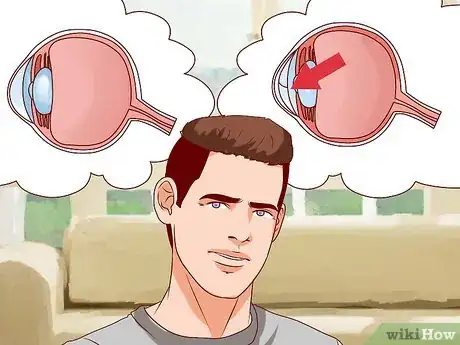


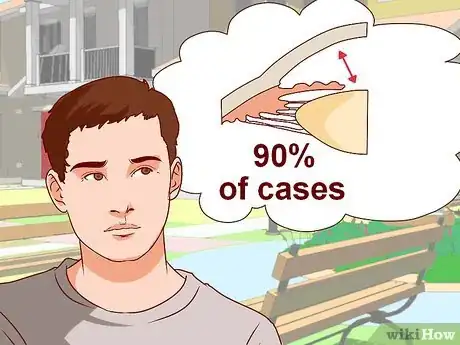
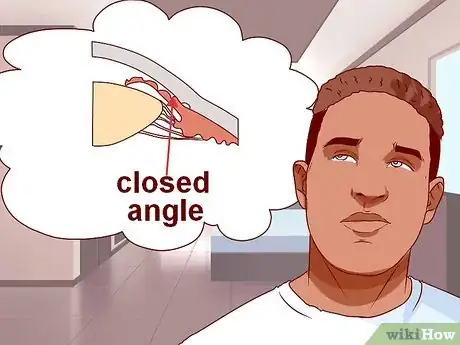
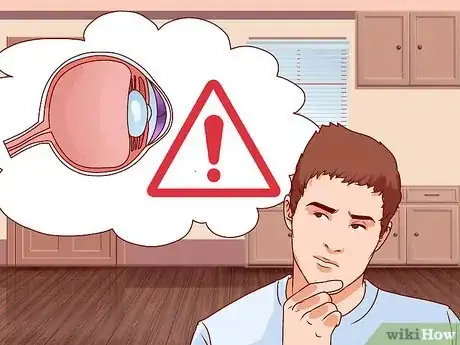
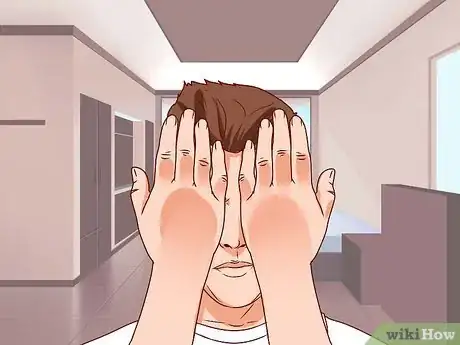
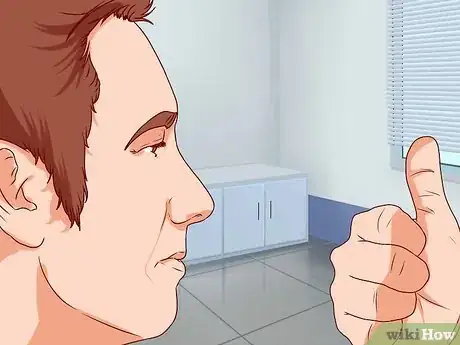
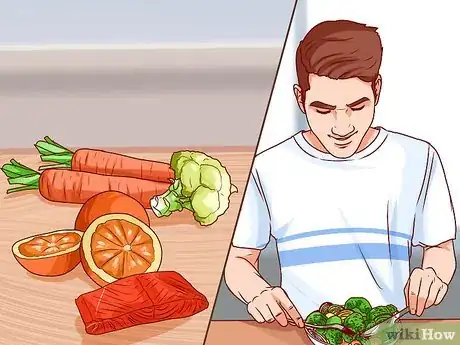
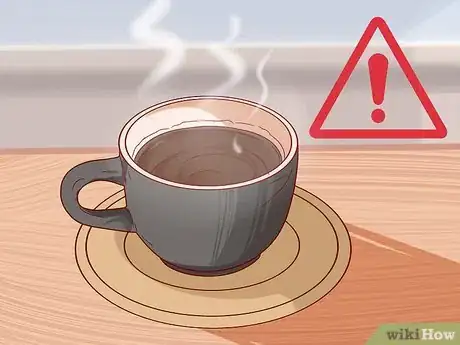
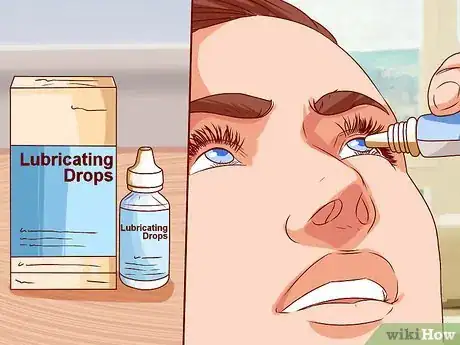
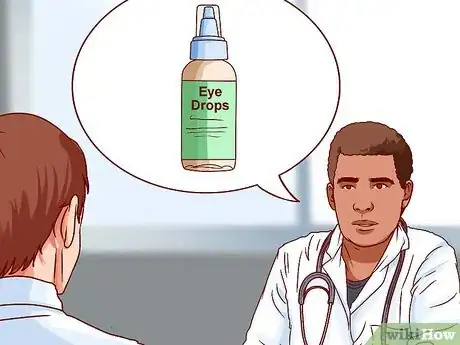
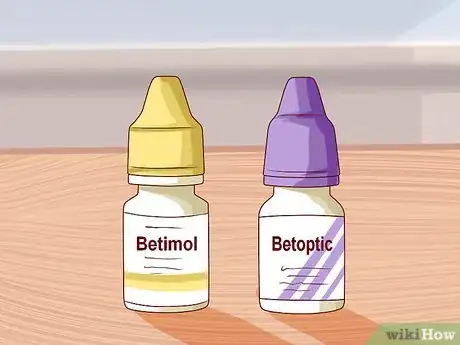


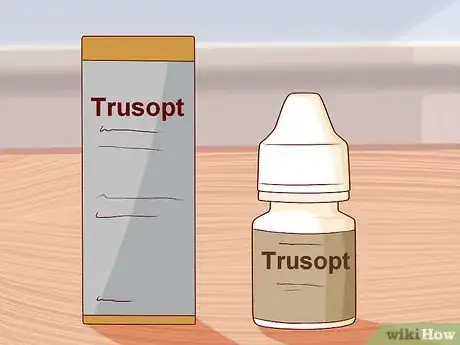
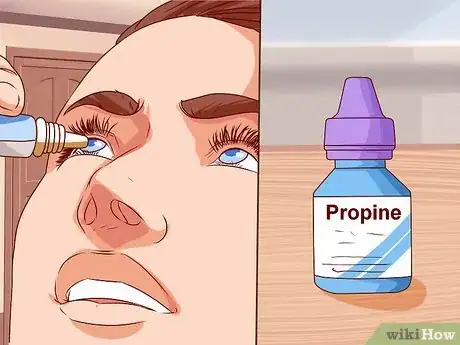


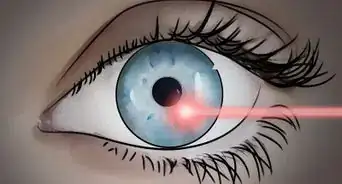
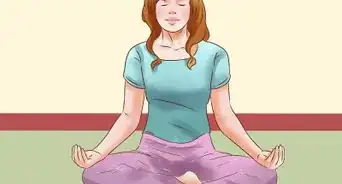
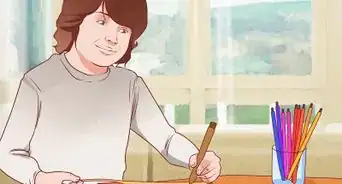
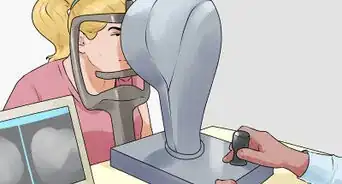
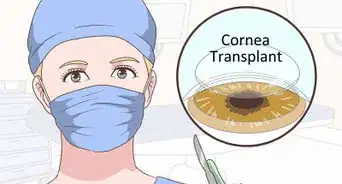



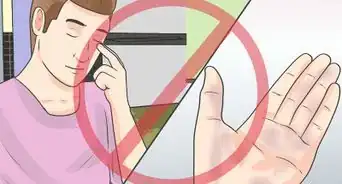
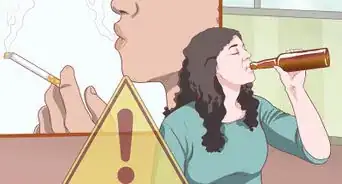
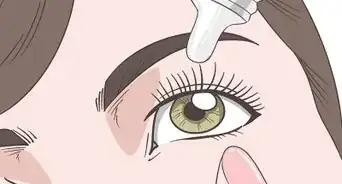
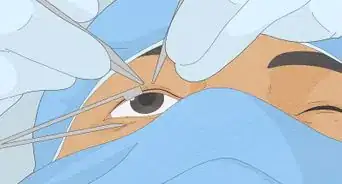
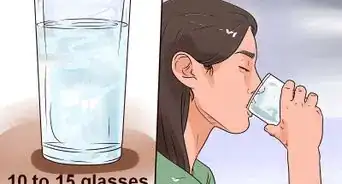








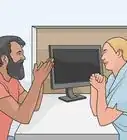
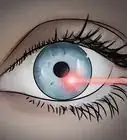
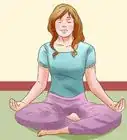
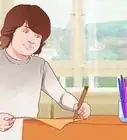



































Medical Disclaimer
The content of this article is not intended to be a substitute for professional medical advice, examination, diagnosis, or treatment. You should always contact your doctor or other qualified healthcare professional before starting, changing, or stopping any kind of health treatment.
Read More...